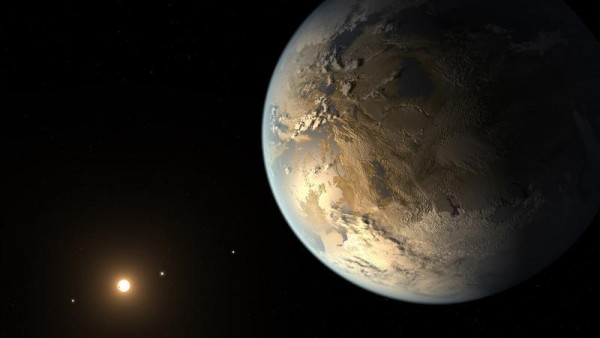By Lynn Palec, | January 20, 2016

The planets Mercury, Venus, Mars, Saturn and Jupiter will be completely visible on Earth and will create a diagonal row.
Five planets in the Milky Way solar system will execute a rare cosmic event on Jan. 20. The planets Mercury, Venus, Mars, Saturn and Jupiter will be completely visible on Earth and will create a diagonal row. The cosmic event will unfold early at dawn.
All the five planets will be completely visible to the naked eye even without the need of a telescope. However, scientists highly recommend the use of a binocular for people to completely see Mercury. The reason to this is because Mercury will be situated lowest on the horizon and the Sun's bright light might eclipse it.
Like Us on Facebook
The brightest of the bunch is Venus, which experts believe should be the easiest to spot. The five planets will be scattered on a huge area of the sky. People are advised to be on a higher location or they have to make sure that their view are unobstructed should they want to see all the five planets at once.
This rare cosmic event last unfold in 2005. Scientists estimate that the five planets will be visible starting Jan. 20 and will last until Feb. 20. Experts said that the best time to watch this rare cosmic alignment is about 45 minutes before the sun rises.
Portland National Weather Service meteorologist Amanda Bowen told OPB, "Wednesday morning is going to be fairly cloudy across the area, though we might (get) some breaks in the clouds, but it's probably not going to be a good viewing much of anything that you'd want to see in the sky."
According to AccuWeather, Mercury, Venus and Saturn will be clustered high over the southern horizon. On the other hand, Jupiter and Mars will be located in the south and southwest part of the sky.
Jupiter should be easy to spot since it is a big planet. Mars will be slightly hard to find especially in the backdrop of several thousand other stars. However, astronomers said that Mars will give out a faint red glow which should set it apart from white-speckled stars.
For those who will not be able to witness the event will have the chance to see it once again in August.
-
Use of Coronavirus Pandemic Drones Raises Privacy Concerns: Drones Spread Fear, Local Officials Say

-
Coronavirus Hampers The Delivery Of Lockheed Martin F-35 Stealth Fighters For 2020

-
Instagram Speeds Up Plans to Add Account Memorialization Feature Due to COVID-19 Deaths

-
NASA: Perseverance Plans to Bring 'Mars Rock' to Earth in 2031

-
600 Dead And 3,000 In The Hospital as Iranians Believed Drinking High-Concentrations of Alcohol Can Cure The Coronavirus

-
600 Dead And 3,000 In The Hospital as Iranians Believed Drinking High-Concentrations of Alcohol Can Cure The Coronavirus

-
COVID-19: Doctors, Nurses Use Virtual Reality to Learn New Skills in Treating Coronavirus Patients











